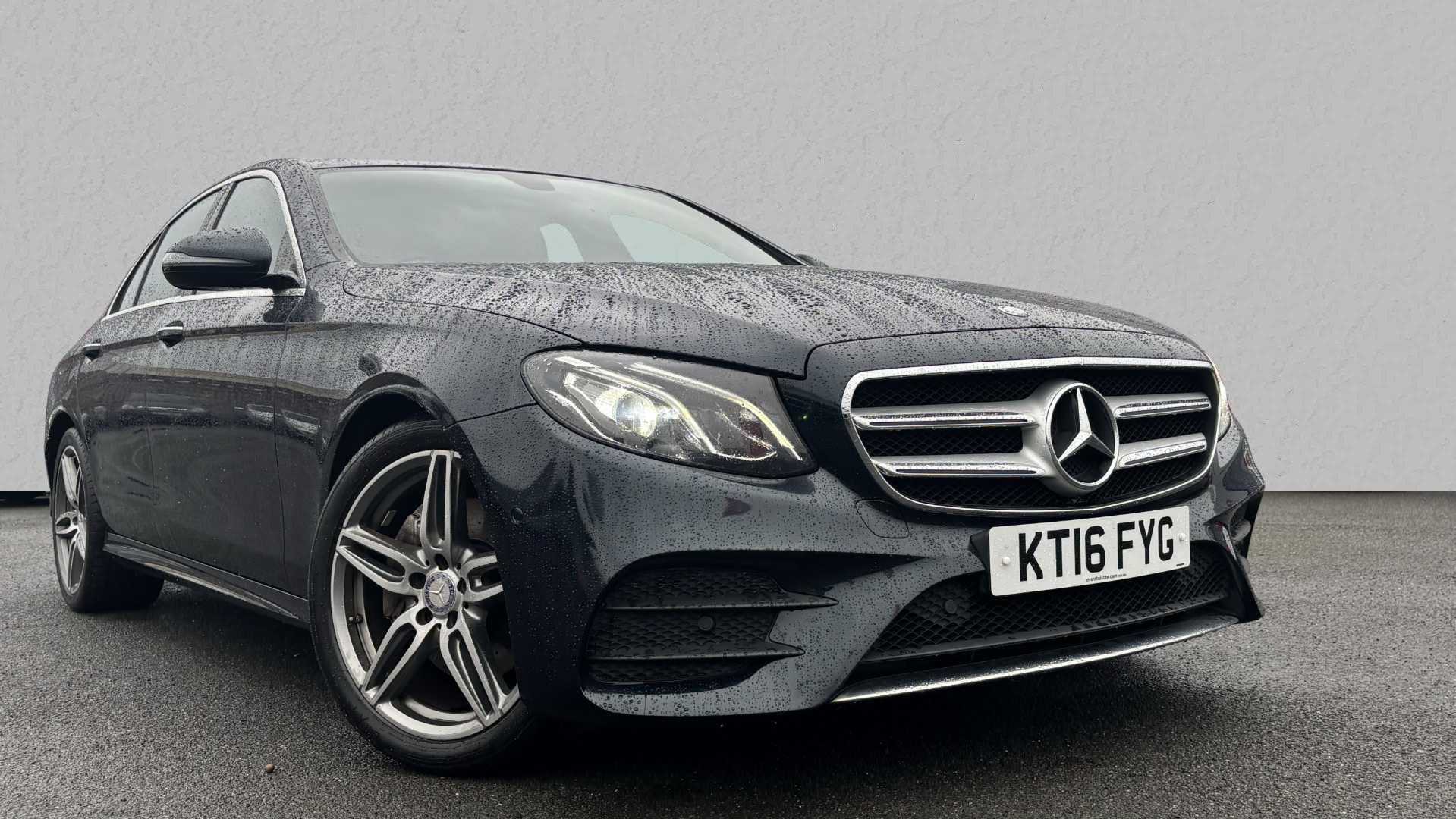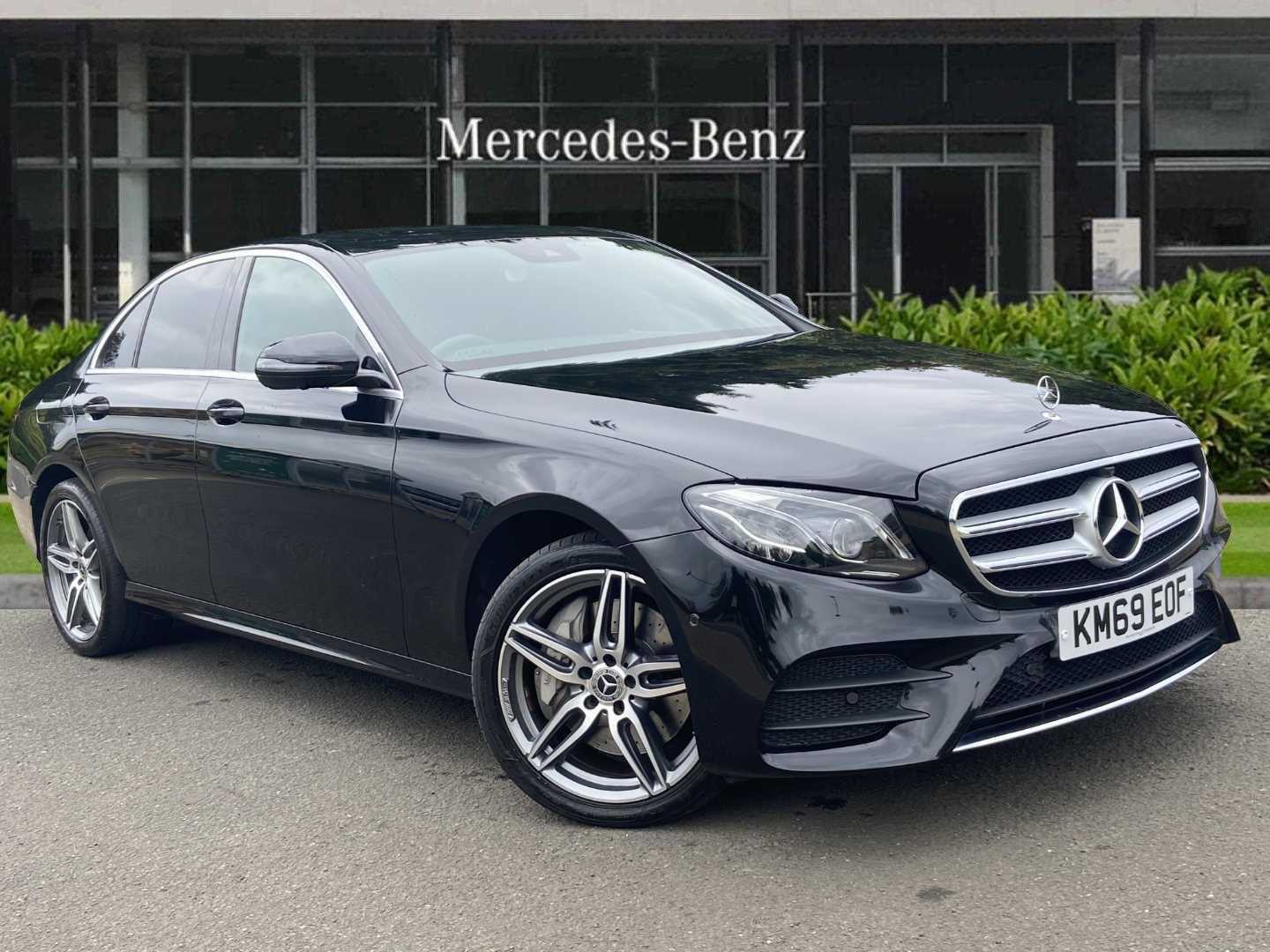Click for vehicles with £200-£700 cashback + free delivery
- Monday-Friday, 9am-5pm
- 020 3936 1257
- hey@heycar.co.uk
See what customers are saying
“Excellent”
Trustscore: 4.4/5
Copyright 2024 heycar - All rights reserved
Click for vehicles with £200-£700 cashback + free delivery

was
£16,899
£400 off
was
£28,555
£1,676 off£32,495
£36,801
£59,764
£19,399
£26,495
£21,792
£28,977
£35,450
£14,999
£20,490
£22,275
£19,490
73-90 of 86 vehicles
Launched in 2016, the fifth-generation Mercedes-Benz E-Class has just been superseded by a new sixth-generation model in 2023, but that doesn’t mean it’s old-hat - and it remains one of the best options available to buyers looking for a well-built, technologically advanced, and fine-driving executive saloon or estate.
The E-Class is one of Mercedes’ core model lines. It’s been badged as such since 1993, but in reality the line can be traced all the way back to 1953 - and this experience in making upmarket saloons means Mercedes-Benz often does its best work with the E-Class. It might not be the sportiest model in its class (though in the AMG models, there aren’t many that top it on performance), but for space, comfort and quality, it has enduring appeal.
Rivals come in the shape of key German models like the Audi A6 and BMW 5 Series, while the Lexus ES is an offbeat alternative that majors on hybrid technology and comfort. You may also consider the Tesla Model S an E-Class rival, if you’re looking to make the switch to electric power.
If BMW’s strategy with the 5 Series has been to always offer 3 Series style dynamics in a larger, more cosseting package, then with the E-Class, Mercedes has typically condensed lessons from the luxury S-Class into a smaller form. What you might lose in the corners to the BMW, the E-Class has often made up for in terms of technology, equipment, and comfort.
In both its styling and from the first time you step into the cabin of the 2016-2022 E-Class, you’ll certainly get the feeling of interacting with a shrunken S-Class. From its smooth, wide dashboard with prominent instrument and infotainment screens, to its airy, expansive cabin, the E-Class definitely feels sophisticated and expensive.
Mercedes offered a huge range of engines too, covering everything from basic four-cylinder petrols and diesels, to the mighty twin-turbo V8 of the E 63 S. With this generation E-Class, Mercedes also reintroduced inline-six engines to the range, after several years of V6s - and the petrol-powered E 450 and diesel E 400 d do justice to the layout with smooth, refined, and ample performance. The basic diesel meanwhile is incredibly frugal, which is why it’s become a favourite with company users and upmarket private-hire firms. It might not be the most prestigious model in the range, but with the same levels of comfort as any other E-Class, it doesn’t punish you for choosing lower running costs.
The interior has a luxurious feel. All models get a pair of display screens, one showing the driver’s instrumentation and another serving as the hub for MBUX, Mercedes’ infotainment system. It’s roomy front and rear and there’s a big boot too, growing further with the desirable Estate models, but taking a bit of a hit on luggage space in the plug-in variants, thanks to the batteries stored underneath it.
All E-Classes are good to drive, though they aren’t quite as sharp or involving as the equivalent BMW 5 Series. You’ll find better build quality meanwhile in the Audi A6, and the performance variants of both the BMW and Audi are pretty formidable too. Still, that three-pointed star motif remains one of the most desirable badges on the road, and the E-Class absolutely does it justice.
A Mercedes-Benz E-Class not for you? We've got 1000s of used cars for sale to suit all budgets and needs
In pure desirability terms, the E-Class doesn’t come much better than the true AMG models. The straight-six E 53 is an appealing machine but the V8-powered E 63 is the kind of vehicle that appears in a lot of enthusiasts’ lottery garages - and the E 63 especially is a mighty machine on the road.
For more everyday use and with practical considerations like running costs in mind, it’s difficult to beat the diesel models. Mercedes-Benz was one of the pioneers of diesel technology and it has fielded E-Class models powered by diesel for decades. The latest ones, even in 2-litre form, are smooth and quiet, and very frugal indeed for this size of car. That’s even more the case for the plug-in E 300 de. And if ultimate refinement is your goal, without sacrificing economy, the smooth-spinning six-cylinder E 400 d is hard to beat.
Mercedes-Benz launched a new E-class in 2023 but with so few on the used market just yet, the trim levels below focus on the outgoing model which is more prevalent. The E-class has been offered in several grades over the years but the most recent variants were all effectively different takes on the sporty AMG Line trim, which features some inspiration from the high-performance AMG models that sat above them.
The Mercedes-Benz E-Class’s dimensions are:
The Mercedes-Benz E-Class’s boot space is:
With the majority of Mercedes-Benz E-class models costing over £40,000 brand new, most will be subject to VED or ‘road tax’ rates from the second to sixth years of registration of the premium rate of £570 per year (for standard petrol and diesels), or £10 less for mild hybrid and plug-in hybrid versions.
According to Mercedes, a basic E 200 or E 220 d in AMG Line trim starts in group 36 for insurance in saloon form, with an E 200 Estate actually one group lower (while confusingly, an E 220 d Estate sits in group 41). This rises to group 43 for an E 53, while an E 63 saloon is group 49 and the estate in group 50.
Read our full Mercedes-Benz E-Class review
What is the most popular colour for Mercedes-Benz E-Class ?
What is the most popular gearbox for Mercedes-Benz E-Class ?
What is the most popular fuel type for Mercedes-Benz E-Class ?
What is the most popular engine for Mercedes-Benz E-Class ?
What is the average mileage for Mercedes-Benz E-Class ?
41337
How many Mercedes-Benz E-Class cars are available for sale?
86